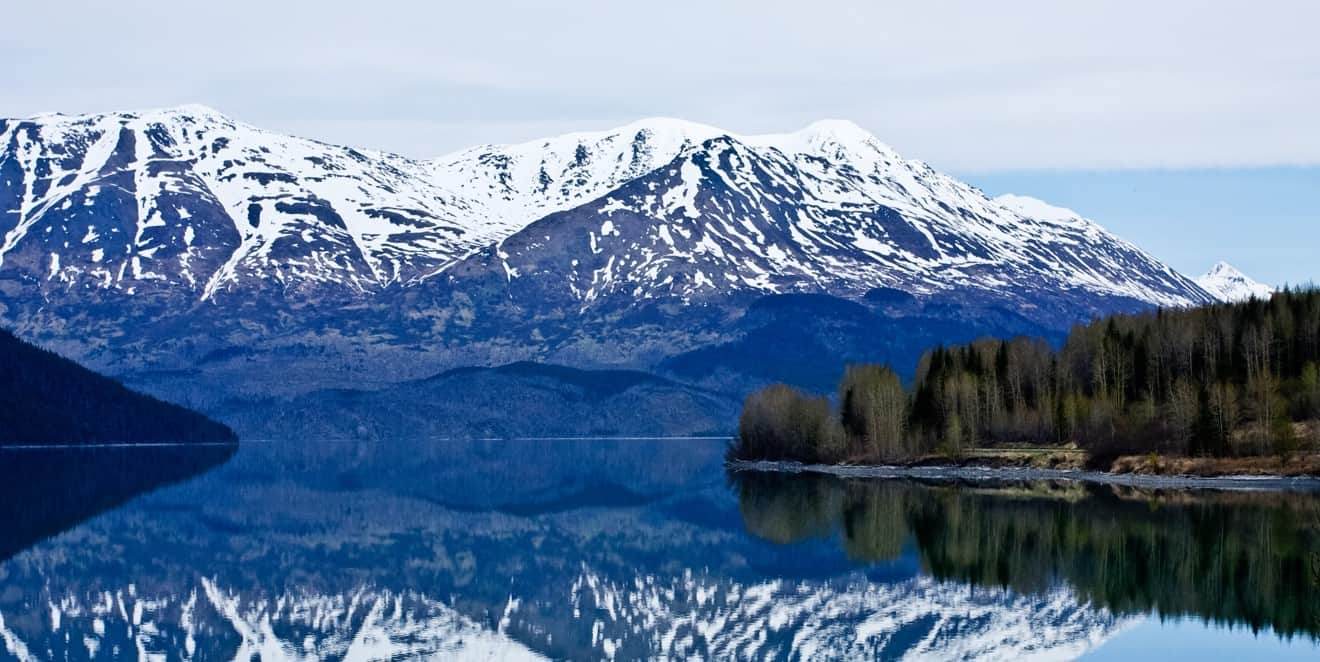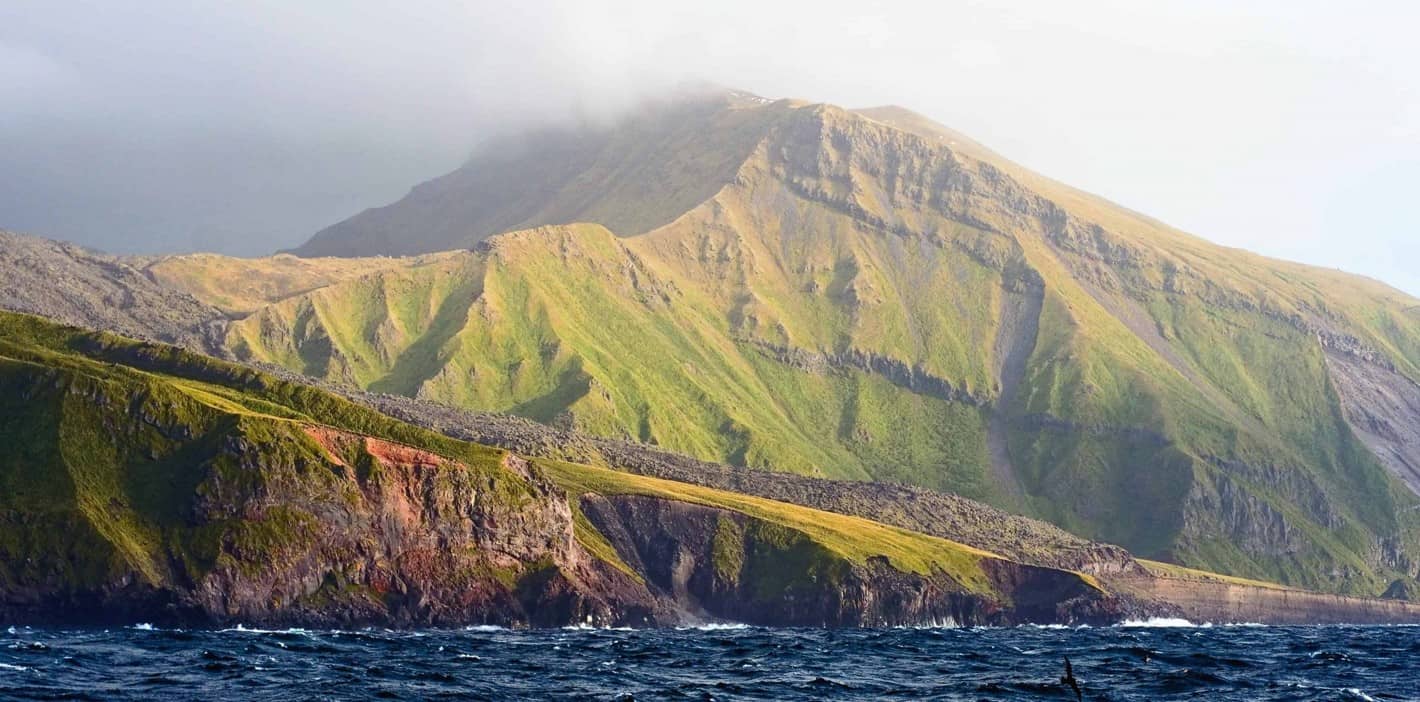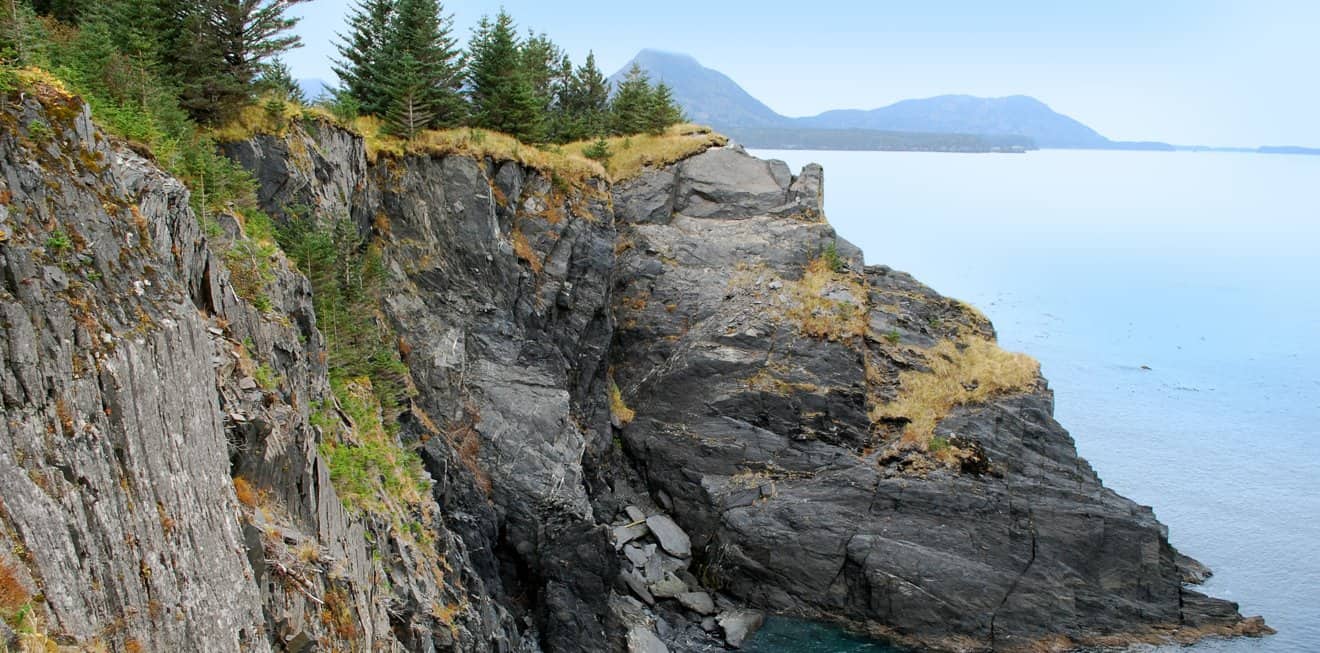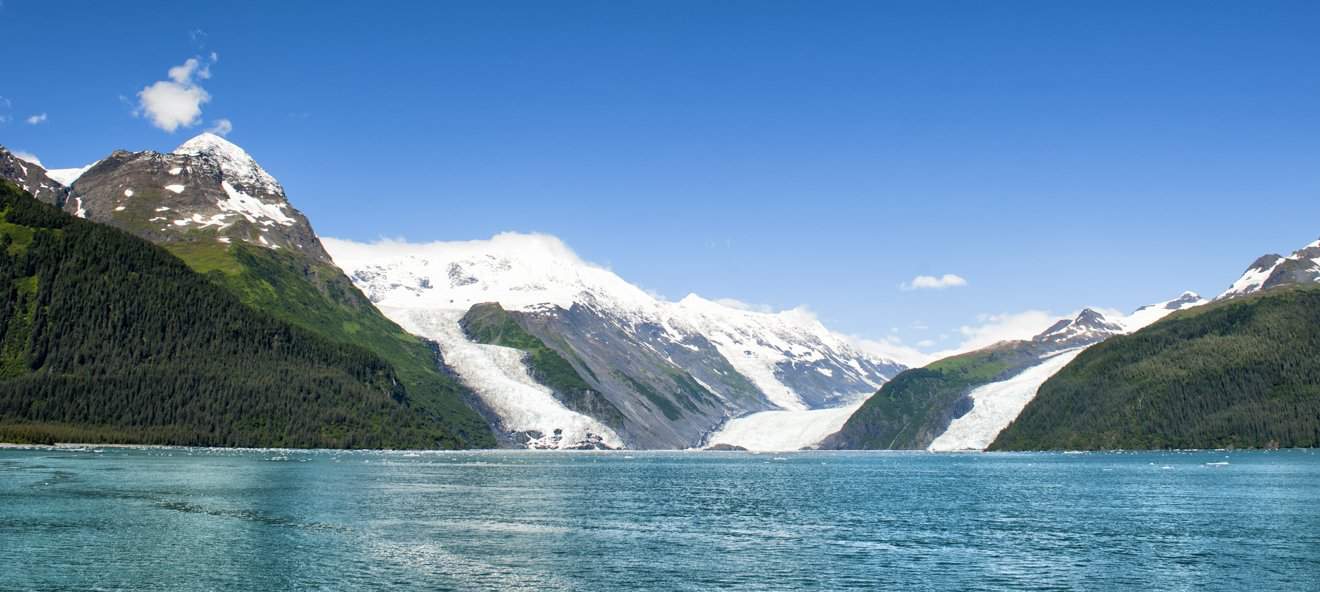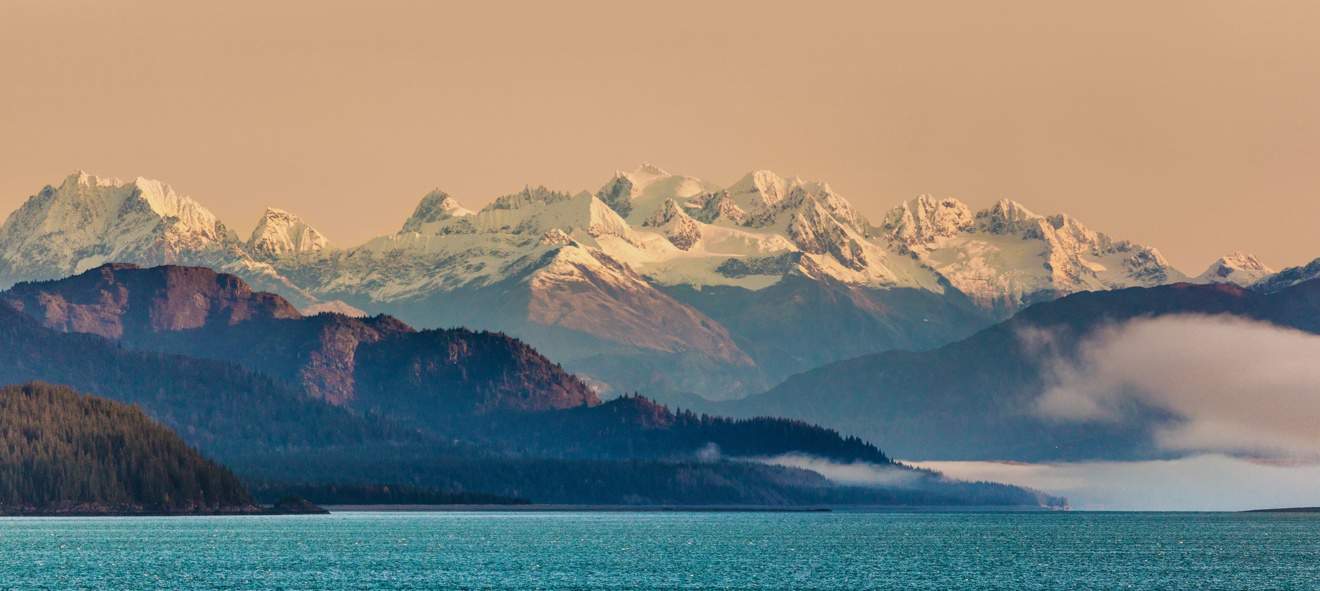The Kenai Peninsula, which stretches from the south-central coast of Alaska, is undoubtedly one of the most interesting regions to visit in the northernmost of the United States. Kenai Fjords National Park is perhaps its best-known attraction, but many other treasures are tucked behind the peninsula’s rugged shores.
What makes it unique and different from other Alaskan regions is the prevalence of rivers, lakes and wetlands. This complex freshwater-based ecosystem covers 40 percent of the Kenai Peninsula’s 30,000 square miles and has made it one of America’s top destinations for fishing enthusiasts. At the same time, it’s an area rich in history, both of its native peoples and from populations that have arrived in recent centuries: Russians and Americans. With its museums and quaint marinas, wild animals and breathtaking landscapes – the Kenai Peninsula will not leave you disappointed.
Contents
How to get there
The Kenai Peninsula is one of the most easily accessible areas of Alaska. Whether you want to explore it in depth or plan to touch base at just one of its many points of interest, you’ll have multiple options to choose from when traveling here from Anchorage or other parts of the state.
- Car. The Seward Highway connects Anchorage to Seward (120 miles) and the Sterling Highway connects this road to the other population centers on the peninsula. If, as is likely, you will reach Anchorage by plane, you can rent a car from here and embark on an Alaskan road trip heading south. The Seward Highway is considered one of the most scenic roads in the entire state.
- Train. Although the Alaskan railroad consists of only one line, Seward is part of it, in fact: it is one of its two terminuses. If you start from Anchorage, you can reach Seward in a little over 4 hours by train, and what we said about the road is also true for the railroad: it is one of the most scenic lines in all of Alaska. Obviously, besides Anchorage, you can also get here by train from all the other places that the train travels through between Fairbanks and Seward. On the official website of the railways you will find updated schedules and prices. The other cities on the peninsula, however, are not connected by rail.
- Buses. Compared to other Alaskan regions, this one has a good bus service that regularly connects the various peninsula towns with Anchorage. In the summer, there are also shuttles connecting between towns. On this site you can find timetables and prices of the bus that connects Seward to Anchorage; on this site you can find timetables and prices of the bus that connects Homer to Anchorage.
- Airplane. Practically every Alaskan town has its own airport, since most of the state can only be reached by air or sea. Small airports on the peninsula are also connected to the rest of Alaska.
- Ship. The ports of Seward and Homer are some of the sea ports of call for the Alaska Marine Highway System, the ideal highway connecting all coastal locations in southern Alaska. It is therefore possible to arrive by ferry. There is also an excellent bus connection between Seward and the port of Whittier, which is a major ferry port.
Climate and temperatures
The peninsula is as large as Belgium and sees a mix of glacier covered mountains, forests and swamps, all surrounded by the sea. Climatic conditions are therefore not uniform throughout the region, but each area has differences that are noticeable depending on the season.
The southeastern coast, where Seward is located, is quite mild. The hottest months (July and August) are characterized by maximum daytime temperatures averaging 60/63° F and minimum nighttime temperatures close to 50° F. In the coldest month (January) there is an average of 21/23° F at night and during the day it is usually close to 32°F. This area is not very rainy in terms of mm fallen, but the days of rain are well distributed throughout the year (between 11 and 16 days of rain per month).
The northwest coast, where Kenai and Homer are located, has a more continental climate, as can be seen by the greater seasonal temperature range. In summer the maximum temperatures are always around 60/63° F, but the minimums in the same period are around 46/48° F. In winter, the situation is even more differentiated. Taking into consideration the coldest month, January, Homer has a maximum average of 30/32° F and a minimum of 17/19° F. Kenai, on the other hand, in the same period has a maximum of 23° F and a minimum of 8.5° F, highlighting a greater difference in temperature.
As for rainfall, although it is always fairly well distributed throughout the year, it is much rarer on the north coast, also due to the Harding Icefield that blocks many of the oceanic disturbances. Homer is subject to only 23 inches of annual precipitation, while Kenai does not even get 19 inches per year.
The mountainous area of the Harding Icefield, covered by perennial ice, is the most impervious. Even in summer, you need to be well covered up against the cold to get close to the glaciers.
Things to do in Seward, Alaska
Seward has only 2700 inhabitants, but it is one of the most popular places with tourists visiting Alaska. One of the reasons is that the tours to the Kenai Fjords National Park depart from here, but that is not the only reason. The small harbor, fundamental to the local life as for all Alaskan coastal towns, is located outside the historical center and is a base not only for fishermen, but also for tour operators. Connecting it to the center is a 0.9 mile walkway that follows the waterfront, full of information panels on numerous topics including the rainforest, fishing and the railroad.
There are no real museums, but you can visit the Seward Community Library Museum (238 6th Avenue), which has books on local history, paintings by Alaskan artists, Russian icons and the original Alaskan flag: designed in 1927 by a boy from a local orphanage. Seward was also devastated by the 1964 earthquake that leveled Valdez, and you can see a video of the tragic event here.
The Resurrect Art Coffee House Gallery (320 3rd Avenue) is a coffee house in an old Lutheran church, where you can enjoy a coffee and a collection of local contemporary art. Take a step back in time at the Van Gilder Hotel (308 Adam Street), where the hallways are lined with historic photographs.
Near Seward you can visit Fort McGilvray, a command center dating back to World War II built to defend the port from the Japanese army, which was stationed on the Aleutian Islands. You can explore the underground maze by flashlight and stand at the artillery emplacements overlooking the headland.
Alaska SeaLife Center
Seward’s main point of interest, however, is the Alaska SeaLife Center. Much more than an aquarium, this is where wild animals are cared for and the goal is to raise public awareness of marine ecosystems. You can acquire scientific information and learn about the damage caused by the accident that led to the oil tanker Exxon Valdez pouring millions of gallons of crude oil into the sea in 1989. The underwater tunnels, from where it is possible to observe fish and seals in their natural environment, are particularly attractive.
Families with children are fascinated by the Discovery Pool, where the youngest can touch anemones and starfish, and by the aviary, where they can discover the habits of guillemots, puffins and other sea birds. Not to be missed is the training of sea lions: unlike dolphinariums all over the world, here these cute and intelligent seals are not trained to perform in a show, but are protected and cared for.
The center also offers special tours such as the Behind the scenes tour and the Encounter tour, where you can learn more about the animals and the work done with them by the park experts. Since it is mainly a place of care for animals, it is frequently possible to attend medical visits to seals and birds, learning a lot about these species.
The Alaska SeaLife Center is located at 301 Railway Avenue. In summer, it is open Monday through Thursday from 9 a.m. to 9 p.m., Friday through Sunday from 8 a.m. to 9 p.m. In winter, it is open Monday through Thursday from 9 a.m. to 5 p.m., Friday through Sunday from 8 a.m. to 5 p.m. Tickets cost $29.95 ($17.95 for children ages 4 to 12). Updated prices and hours are available on the official website.
Near Seward: Kenai Fjords National Park
Seward is the gateway to one of Alaska’s most interesting parks, Kenai Fjords National Park. A really suggestive stretch of coastline, where the sea meets the mountains and where you can see marine animals of all kinds, choosing between organized ferry trips and sports activities such as kayaking and mountaineering. You can discover it in depth in our dedicated article on how to visit Kenai Fjords National Park.
Things to do in Homer, Alaska
Larger than Seward, Homer has about 5,000 inhabitants, but it can be said that it only came into being as we see it now after the 1950s, when it was connected by the Sterling Highway. This area has always been famous for shellfish, collected by the natives and Russian traders. It was only in 1867 that the first settlement was set up, for a coal mine, but it lasted only a few decades. The road connection, making it easier to reach, allowed Homer to repopulate and become one of the most eclectic towns in Alaska. A mix of artists and sailors, Russian ‘Old Believers’ and sixties hippies settled here. Today, it is the gateway to the front bay and other natural wonders of the Kenai Peninsula.
Any visit to Homer should start at the Alaska Islands and Ocean Visitor Center (95 Sterling Highway). This is not just a tourist office, but a true high-tech museum dedicated to local culture and natural science. The main theme of the museum is the animals that inhabit the Alaska Maritime National Wildlife Refuge: the reserve scattered across 2,500 Alaskan islands, famous for its seabird colonies. If you can’t afford to set sail for an island, the Seabird Theater offers a virtual view of a bird colony, complete with sounds and smells. In addition to the Seabird Theater, you can also find other interactive attractions related to the world of biology.
Homer is home to some of the most famous art galleries in the state. The most unique is the Bunnel Street Arts Center (106 W. Bunnel Street), a non-profit institution located in the largest and oldest commercial building in the city. In addition to its many contemporary pieces of artwork, it regularly hosts performances, concerts, lectures and events of various kinds. Three other notable museum spaces are located on Pioneer Avenue. The Fireweed Gallery, dedicated to Alaskan works, the Ptarmigan Arts, with works and objects of all kinds, and the Picture Alaska Art Gallery, which in addition to art and crafts exhibits 350 vintage photos. Not far away there is the Pratt Museum (3779 Bartlett Street). Here we find artifacts of the natives, settlers and fishermen, but there are also regular temporary exhibitions and also the skeletons of a beluga and a hyperodon. The biggest attraction, active in the summer, is the webcam on Gull Island: visitors can spin it around to get a closer look at the birds.
Just outside of town, you can visit the Carl E. Wynn Nature Center: a 57-acre area of flower meadows and forests, filled with trails. You can see moose and baribal bears. Another place not to be missed is the Homer Spit: a 4.5 mile long finger of sand and pebbles, from where boats depart for sport fishing. In summer, hundreds of fishermen set sail every day, usually returning loaded with halibut, king salmon and other fish.
Kachemak Bay
Homer is located at the entrance of Kachemak Bay, on whose opposite shore there is an area that is not easy to reach, but rich in natural beauty. Human presence is limited to Seldovia and Halibut Cove, reachable by boats or small airplanes. On reaching the opposite coast of the bay from Homer, you can rent a kayak and maybe reach Gull Island to see the many seabirds that populate it. Here you can also visit two small but quaint towns:
- Seldovia has about 250 residents and points of interest include the Russian Orthodox Church of St. Nicholas and the small Seldovia Village Tribe museum. The surroundings of the seaside village are full of paths and puddles where high and low tides create the habitat for many animals and the mollusks that are famous in this area.
- Halibut Cove is one of the most unique places you can visit in Alaska. There are no roads in this village with just over 50 people, who live in houses of made of wood. Residents use kayaks or rowboats to get around, as well as a network of pedestrian walkways. Visitors can only walk there from 1pm to 9pm, being careful not to disturb the privacy of the locals. When you consider that in the early 1900s Halibut Cove was home to nearly 40 herring-salting plants, the situation has definitely changed over the century.
During the summer there are a number of tour boats that depart from Homer doing tours of the bay, either for a few hours or all day, with shorter or longer stops at Seldovia, Halibut Cove and points of interest along the coast at Kachemak Bay State Park.
Things to do in Kenai, Alaska
Kenai, with a population of less than 8,000, is the main town in the region of the same name and sits at the mouth of the river, also named Kenai. This area rich in fish and game, yet flat and fertile, was for centuries the home of the Dena’ina people. Russian fur traders built a fortified station here in 1791, which lasted six years until the battle between the Russians and the Dena’ina, in which the natives prevailed. The U.S. revived the town with the construction of Fort Kenay in 1869 and the development of the fish canning industry beginning in the 1880s, followed in the 1950s by the discovery of gas and oil nearby.
For information about the town, our advice is to start with a visit at the Kenai Visitor and Cultural Center, an information center that, as is often the case with small Alaskan towns, also doubles as a local history museum. Here, indigenous artifacts are mixed with Russian objects and contemporary art. The Russian period is also well represented architecturally by the Holy Assumption of the Virgin Mary Orthodox Church. Not far away, you’ll also find St. Nicholas Chapel, an Orthodox chapel made of logs.
The historical center of the town is less interesting than in other places. What is worthwhile are the surroundings, starting with the Kenai Beach Dunes. This beautiful beach, on the north side of the mouth of the Kenai River, is lined with low dunes. It may be true that you don’t come to Alaska to look for beaches to sunbathe, but it’s a place worth a peaceful walk.
Not to be missed, just south of the town, are the Kenai River Flats: over 1200 hectares of marshland where you can spot an incredible variety of birds. In spring, thousands of snow geese gather here as they migrate to Siberia. Between May and June, caribou come here to breed, and it’s not hard to see baby American reindeer trying to stand up and take their first steps. During the summer salmon migration, seals and belugas also come up river to hunt them.
Kenai is not the only settlement on the peninsula with Russian origins. Further south, near Homer, is Nikolavesk. Founded in 1968 by five Russian families, today this community has about 300 residents and is one of the leading Russian communities in Alaska. Traditions are jealously preserved here, and residents still use traditional clothing. Also on the Kenai Peninsula, similar communities include Voznesenka, Razdolda and Kachemak Selo.
Kenai National Wildlife Refuge
More than half of the Kenai Peninsula is protected within the boundaries of the Kenai National Wildlife Refuge: 800,000 hectares of forests, lakes and glaciers where animals are masters of their habitat. The national park was established to protect moose, but besides these majestic quadrupeds, you can easily see other large mammals such as brown bears, baribals, Dall’s sheep, caribou, wolverines, beavers, and lynxes. There is no shortage of birds, including eagles and whooping cranes.
To begin your visit, refer to the visitor center located in Soldotna. This is where the Keen Eye Trail starts: a 0.75 mile trail that leads to an observation platform where you can use a telescope to get a close-up view of Headquarters Lake. This is just one of the 4000 lakes in the reserve, which combined with the rivers and large marshes make it a real water world. Also located here is one of Alaska’s largest lakes, Tustumena, with a surface areas of 188 square miles.
There are no entrance fees to the nature reserve, but there are guided tours, available at the visitor center.
How to visit Kenai National Wildlife Refuge (on foot, by car, by canoe)
There are several ways to visit this large aquatic ecosystem. The most convenient way is by car: the Skilak Lake Road is a 18 mile-long dirt road that branches off the Sterling Highway and allows you to delve into a beautiful section of the park.
Obviously, you can go much further inland walking than you can by car. The Bear Mountain Trail and the Hidden Creek Trail are two trails, 1.5 miles and 2.4 miles long respectively, that allow you to see many animals up close.
The vast lake region is ideal for canoeists, so much so that an actual canoe trail system has been established: Kenai National Wildlife Refuge Canoe Trail System. This curious waterway is divided into two parts. The 60 mile-long Swan Lake Canoe Route connects some thirty lakes and is ideal for organizing day trips. The 80 mile-long Swanson River Canoe Route connects 40 lakes and 50 miles of river, and is perfect for multi-day trips.
On the official website you can find additional information on all the routes and the various possibilities of visiting the natural park.
Best Places to Stay on the Kenai Peninsula
The region is a large one and if you intend to spend many days here, I suggest you stay in at least two different cities so you don’t waste too much time moving around. Here is some advice on hotels in the main centers.
Best Places to Stay in Homer
- Alaskan Suites. Set on the hill overlooking the town, this is one of the most beautiful places you can stay in Homer. Spacious and luxurious log chalets nestled in an enchanting landscape.
- Alaska Adventure Cabins. Want to sleep in a train car or fishing boat converted into apartments? This quirky but luxurious lodging option is worth considering.
- Baycrest Lodge. Do you want an outdoor hot tub where you can relax in nature? If yours is a romantic getaway, you won’t be disappointed with this choice.
Best Places to Stay in Kenai
- Uptown Motel. This is the best solution for those who want to stay in the center of town, in a decent place without spending an exorbitant amount of money. A quaint motel decorated with vintage items.
- Aspen Suites Hotel Kenai. A hotel without too many frills, but that fulfills all requirements, with good services, in a good location.
- Eagle Rock Lodge. To sleep in nature, in a place that is well furnished and has all the services. This lodge has a garden and barbecue, as well as being strategically located for visiting the surroundings of Kenai.
Best Places to Stay in Seward
We covered recommended hotels in this town in our article on where to stay near Kenai Fjords National Park.
